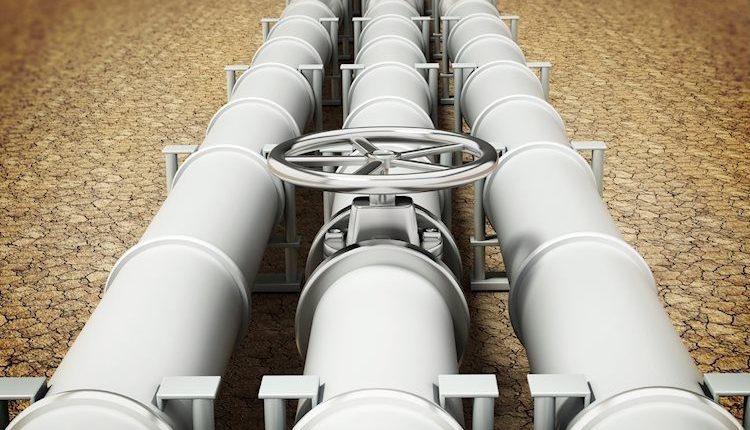- Natural Gas takes a small step back as US markets close due to the Labor Day Holiday.
- The US Dollar weakens slightly after Friday’s knee-jerk reaction on Nonfarm Payrolls data.
- Support at $2.80 likely to hold before the rally picks up again.
Natural Gas puts trader torn between two forces as both supply and demand are under pressure. The supply side is starting to see a bottle neck with several gas fields in Norway suddenly halting production in unforseen maintenance. Meanwhile big buyer Europe is showing less interest, less demand, as the strategic gas stockpiles are nearly fully ahead of winter and ahead of target.
Meanwhile, the US Dollar trades mixed after a US Jobs report that delivered a knee-jerk reaction. The US Dollar Index first weakened on the initial headlines, and reversed an hour later as markets digested the report’s content, which pointed to still strong labour market conditions. With the US on holiday, no big moves are expected in either Natural Gas futures or in the Greenback.
At the time of writing, Natural Gas is trading at $2.825 per MMBtu.
Natural Gas news and market movers
- Halfway through the European trading session both European and US gas futures are dropping lower as traders are torn between supply issues from Norway, strike risk in Australia and abating demand from Europe with gas stockpiles nearly full.
- Questions on China global recovery are doubting if China will ever pick up again its demand for LNG pre-covid. Meanwhile president Xi Jinping is not attending the G20 meeting in order to avoid questions on funding from China banks toward Russia, amounting to a few billions in USD.
- The risk of strikes in Australia remains high, an outcome that could hit Natural Gas supply going forward.
- Japan’s spot power price climbed 5.5% for the week as bad weather hurts the solar-power supply and puts higher pressure on LNG supplies. Reports of regional costs soaring on LNG supply are being factored into the price as well.
- Further unplanned curbs in Norway are projected due to unforeseen maintenance at the Aasta Hansteen field. The Dvalin field is also impacted, while planned works at Oseberg are being extended due to unforeseen delays.
- The main Troll gas field in Norway is reporting delays as well in restarting its production to at least Septermber 08.
- Chevron Australia has reported it started mediation talks with workers at its major Australian LNG plants.
Natural Gas Technical Analysis: support holds
Natural Gas was on a tear last week, together with Crude Oil prices. Though the European bloc has its gas stockpiles filled up over more than 90%, it looks like it will need to scramble for any further needs. Any futher delays in production from Norway are sudden strikes in Australia could shift the needle.
On the upside, $3 is the level to watch after the double top formation from Friday and Thursday. Just above there, the 200-day Simple Moving Average (SMA) is present as a cap and has not been tested in the past few months. Keep an eye on $3.03 before targeting $3.18 and testing the upper side of the trend channel.
On the downside, the trend channel has done a massive job underpinning the price action. Aside from one small false break, ample support was provided near $2.71. The 55-daySMA needs to give that much needed support at $2.71 ahead of the ascending trend channel at $2.63. Any falling knives can still be caught by the 100-day SMA near $2.58.
XNG/USD (Daily Chart)
Natural Gas FAQs
Supply and demand dynamics are a key factor influencing Natural Gas prices, and are themselves influenced by global economic growth, industrial activity, population growth, production levels, and inventories. The weather impacts Natural Gas prices because more Gas is used during cold winters and hot summers for heating and cooling. Competition from other energy sources impacts prices as consumers may switch to cheaper sources. Geopolitical events are factors as exemplified by the war in Ukraine. Government policies relating to extraction, transportation, and environmental issues also impact prices.
The main economic release influencing Natural Gas prices is the weekly inventory bulletin from the Energy Information Administration (EIA), a US government agency that produces US gas market data. The EIA Gas bulletin usually comes out on Thursday at 14:30 GMT, a day after the EIA publishes its weekly Oil bulletin. Economic data from large consumers of Natural Gas can impact supply and demand, the largest of which include China, Germany and Japan. Natural Gas is primarily priced and traded in US Dollars, thus economic releases impacting the US Dollar are also factors.
The US Dollar is the world’s reserve currency and most commodities, including Natural Gas are priced and traded on international markets in US Dollars. As such, the value of the US Dollar is a factor in the price of Natural Gas, because if the Dollar strengthens it means less Dollars are required to buy the same volume of Gas (the price falls), and vice versa if USD strengthens.
Read the full article here

